Why Cartilage Matters in Knee Joint Function
Cartilage in the knee is a critical tissue that cushions the joint and facilitates smooth, pain-free movement. Understanding how cartilage functions, how it deteriorates in conditions like osteoarthritis (OA), and the medical strategies to treat such deterioration is essential for managing knee pain and maintaining mobility. This article explores the structure and role of cartilage, the impact of osteoarthritis on this tissue, and the spectrum of current treatment options available, from non-surgical interventions to advanced surgical procedures.
The Structure and Function of Knee Cartilage
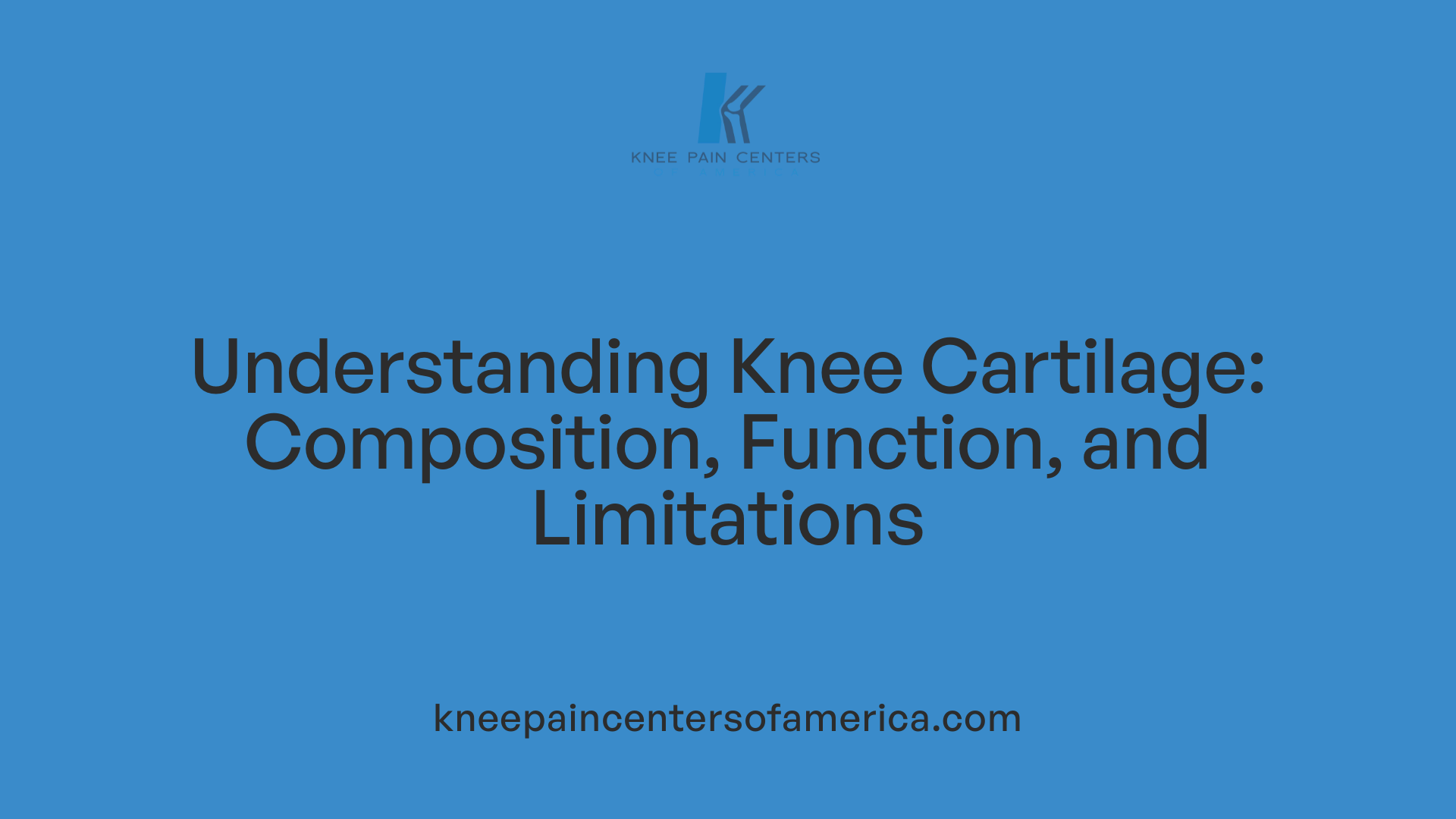
Composition and types of cartilage in the knee
The knee joint contains two primary types of cartilage: articular cartilage and meniscal cartilage. Articular cartilage, a form of hyaline cartilage, covers the ends of bones and the back of the kneecap. It is smooth, slippery, and rubbery, designed to facilitate smooth, frictionless movement of the joint. The meniscus is fibrocartilage, providing cushioning between the thigh and shin bones, helping to absorb shocks and stabilize the joint.
Role of cartilage in joint movement and shock absorption
Cartilage serves as a vital protective cushion in the knee. By covering the bone surfaces, articular cartilage reduces friction during movement, allowing the knee to flex and extend smoothly. It also distributes the mechanical load evenly across the joint, helping to absorb shocks from everyday activities like walking, running, and jumping. This shock absorption function prevents direct bone-on-bone contact, which could cause pain and joint damage.
Cartilage's limited healing capacity
Despite its important role, cartilage has a limited ability to heal and regenerate. This is primarily because it lacks a direct blood supply; nutrients must diffuse through the cartilage matrix, slowing the repair process. Chondrocytes, the specialized cells within cartilage, have low replication rates, further restricting natural healing. Consequently, cartilage damage from injury or degenerative diseases like osteoarthritis often progresses without effective repair, leading to chronic joint problems.
The role of cartilage in the knee joint is fundamental: it provides a smooth, cushioned surface to facilitate joint movement and absorb mechanical stresses, ensuring joint integrity and function over time.
How Osteoarthritis Impacts Knee Cartilage
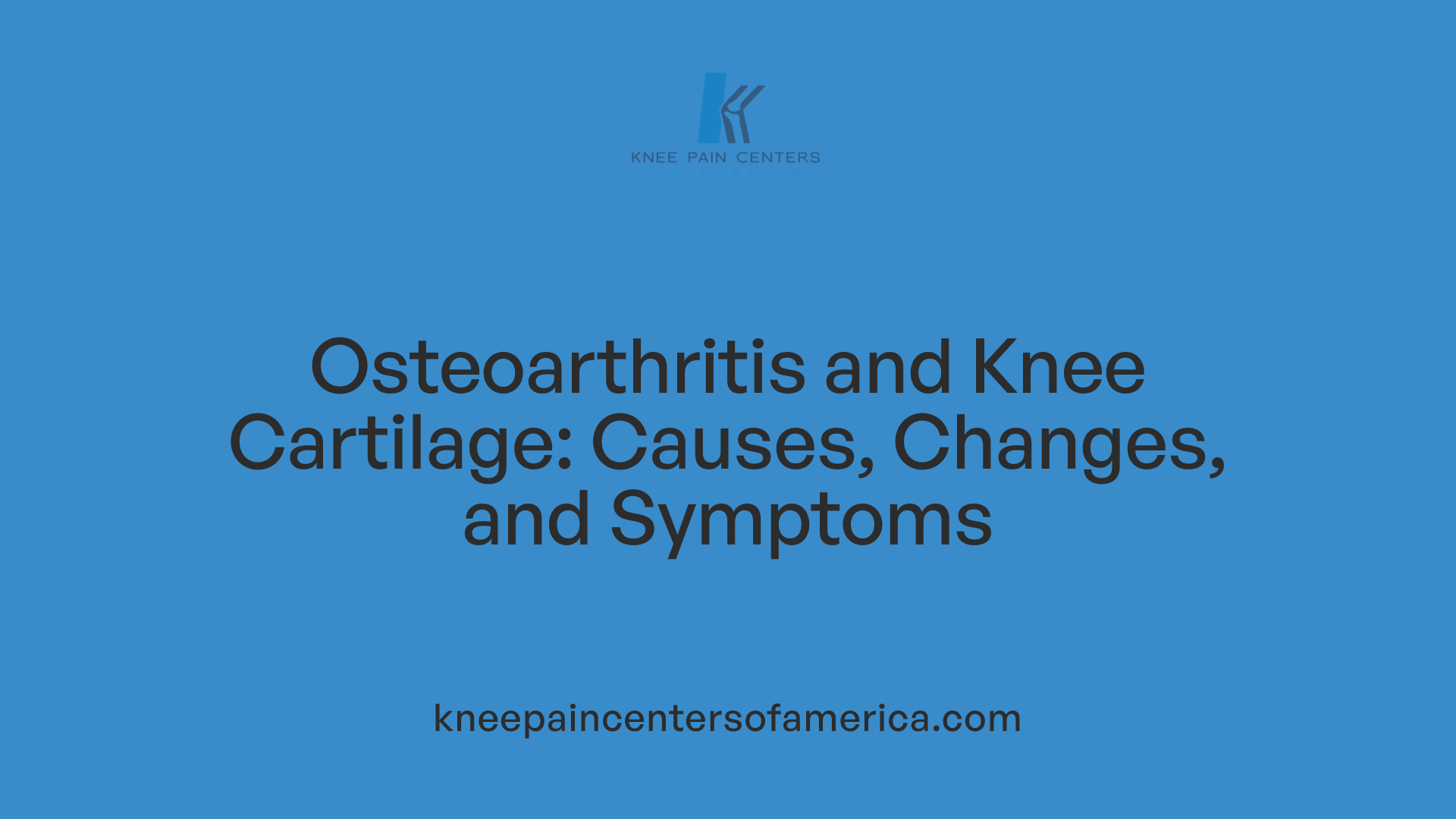
How does osteoarthritis affect knee cartilage?
Osteoarthritis causes a gradual breakdown of the knee's articular cartilage, the smooth, rubbery tissue that covers bone ends and enables painless joint movement. This deterioration involves the disorganization of collagen fibers, a decline in proteoglycan content, and an increase in water within the cartilage. As a result, the cartilage loses its elasticity and shock-absorbing properties, making it prone to cracking, fissuring, and erosion.
What biochemical and mechanical factors contribute to cartilage damage?
In osteoarthritis, enzymes such as matrix metalloproteases (MMPs) — including stromelysin, collagenase, and aggrecanase-1 — are excessively active. These degradative enzymes break down key cartilage components, tipping the balance toward cartilage loss. Mechanical stresses from aging and wear and tear also contribute by repeatedly loading the joint, further damaging cartilage integrity. However, osteoarthritis is distinct from aging alone; it reflects pathological cartilage breakdown.
What are the symptoms and radiographic signs of knee cartilage deterioration?
Cartilage loss leads to symptoms like gradual-onset knee pain that worsens with activity or prolonged rest, stiffness, swelling, and reduced mobility. Patients may also experience crepitus — a cracking or snapping sensation during movement. Radiographically, osteoarthritis manifests with joint space narrowing, reflecting cartilage loss, along with osteophyte (bone spur) formation, subchondral sclerosis, and cysts. These changes indicate abnormal joint remodeling due to cartilage degeneration.
Together, these pathological changes highlight how osteoarthritis disrupts knee cartilage structure and function, causing pain and impaired movement.
Non-Surgical Management of Knee Osteoarthritis and Cartilage Damage
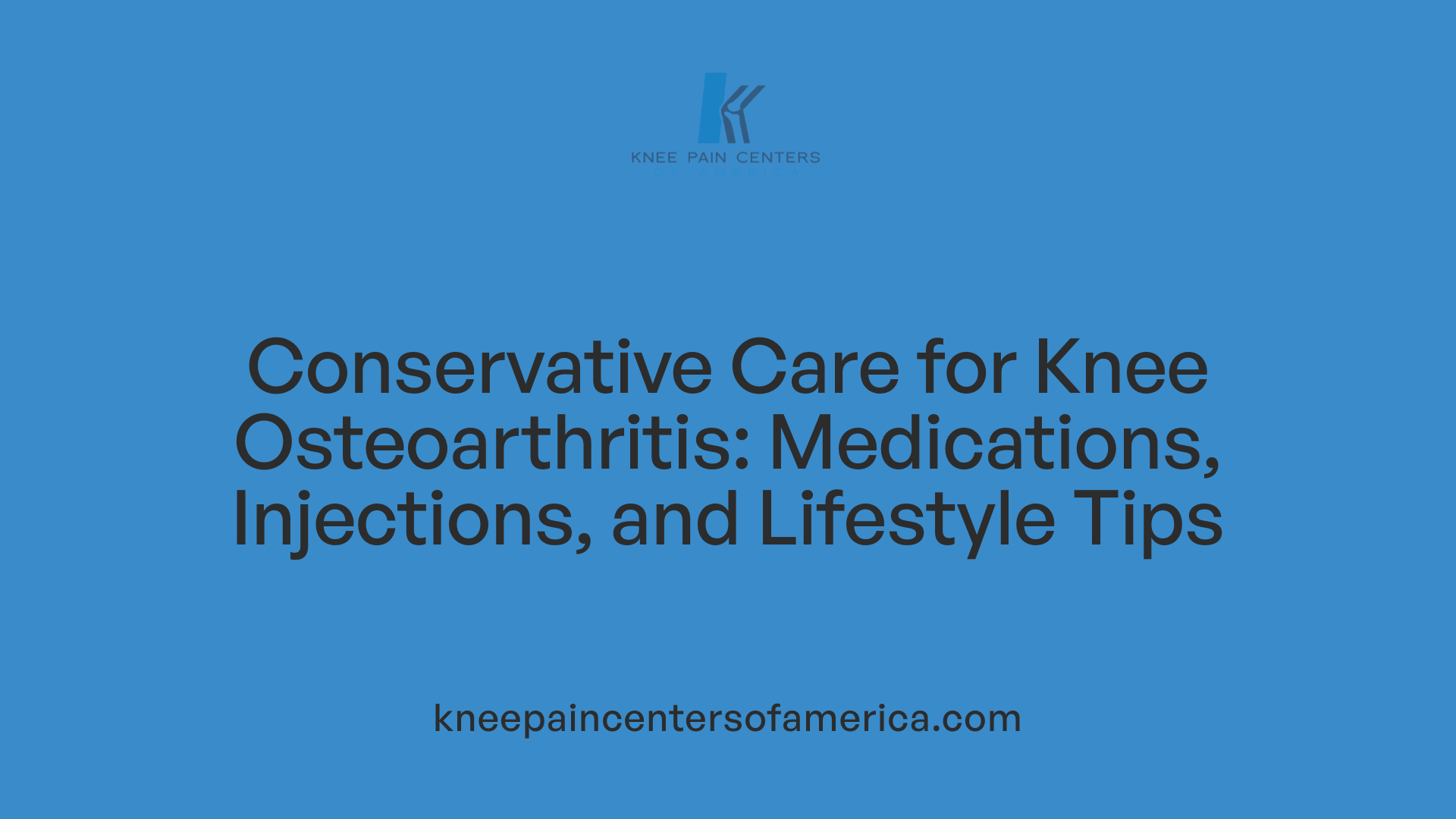
What are common medical treatments for knee pain and osteoarthritis?
Managing knee osteoarthritis (OA) and cartilage damage without surgery involves a variety of effective medical treatments and therapies. Pain-relieving medications such as acetaminophen and nonsteroidal anti-inflammatory drugs (NSAIDs) like ibuprofen or naproxen are routinely used to reduce pain and inflammation. Duloxetine, a medication that acts on the nervous system, may also be prescribed for chronic pain.
Injections play a significant role in symptom management. Corticosteroid injections help quickly reduce joint inflammation, providing temporary relief. Hyaluronic acid injections serve to lubricate the joint, potentially slowing cartilage breakdown and easing movement discomfort.
Physical therapy complements medications by strengthening muscles surrounding the knee, improving joint stability, and enhancing mobility. This approach also includes educating patients on joint-protective techniques and tailored exercises.
What non-surgical options are effective in managing knee osteoarthritis?
Non-surgical management effectively addresses symptoms and slows disease progression. Lifestyle modifications such as weight loss significantly reduce pressure on the knee joint, lessening pain and improving function. Engaging in low-impact activities like walking, cycling, or aquatic exercise helps maintain joint mobility without excessive wear.
Bracing and orthotic devices offer mechanical support, improving joint alignment and reducing stress on damaged cartilage.
Emerging biological treatments are rising as promising adjuncts. Platelet-rich plasma (PRP) injections, derived from the patient's own blood, contain growth factors that may promote tissue repair and reduce inflammation. Other regenerative therapies, including bone marrow aspirate concentrate, are under investigation to support cartilage regeneration.
Lifestyle modifications and physical therapy benefits
In addition to medication and injections, maintaining a healthy weight reduces mechanical strain on the knee. Physical therapy programs focus on muscle strengthening, flexibility, and aerobic conditioning, which improves stabilization of the joint, reduces stiffness, and enhances overall function.
Together, these strategies form a comprehensive approach to manage knee osteoarthritis and cartilage damage conservatively, improving quality of life and delaying or avoiding the need for surgery.
The Crucial Role of Physical Therapy in Knee Joint Health
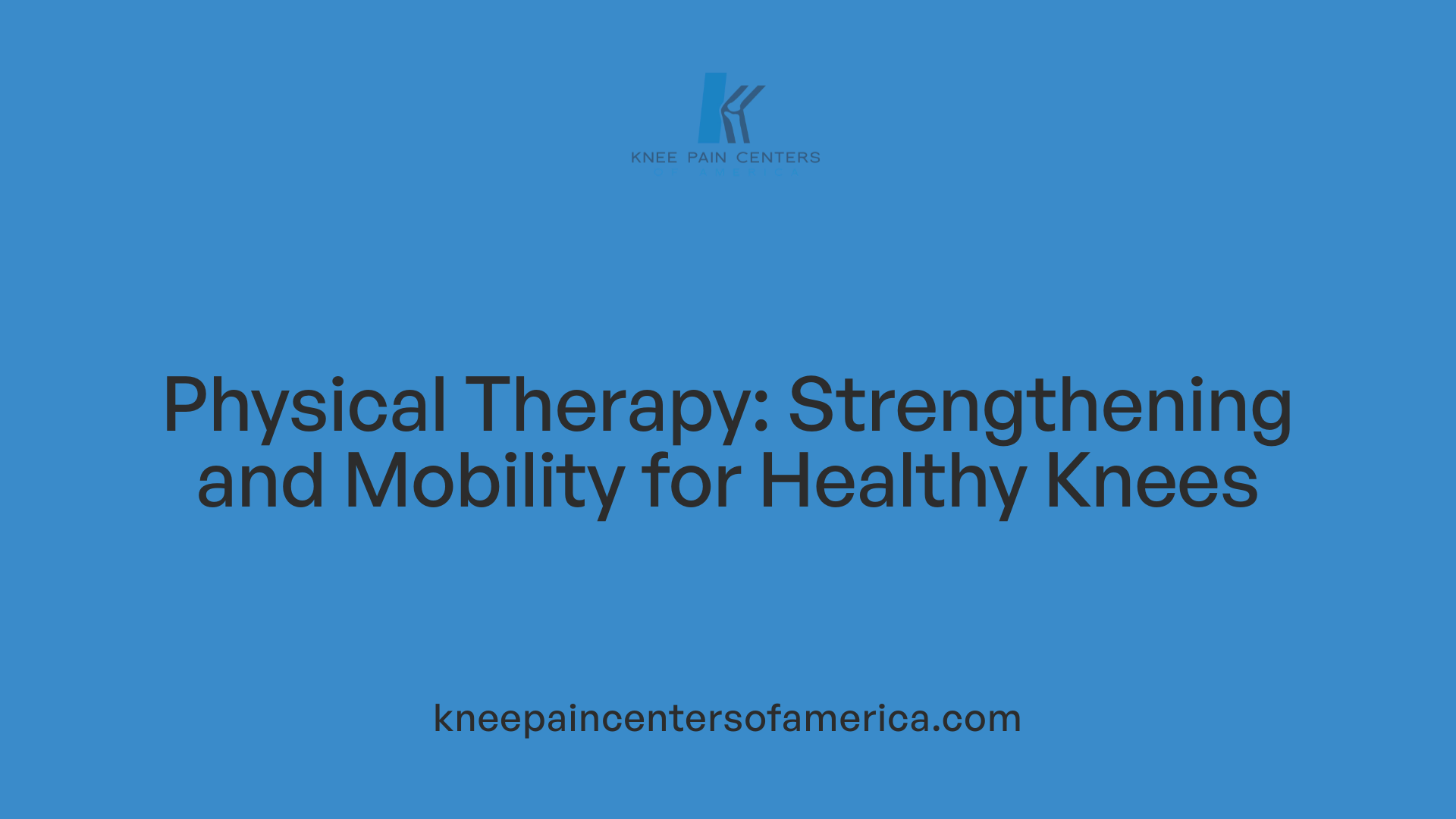
Strengthening and flexibility enhancement
Physical therapy plays a vital role in managing knee osteoarthritis by focusing on strengthening the muscles around the knee, particularly the quadriceps, hamstrings, and lower leg muscles. Enhanced muscular support helps stabilize the knee joint, reducing the load and mechanical stress on the damaged cartilage. Therapists also work to improve joint flexibility and range of motion through targeted stretching exercises, which alleviate stiffness common in osteoarthritis.
Pain and inflammation reduction
In addition to physical strengthening, physical therapy utilizes manual techniques and specific exercise regimens to decrease pain and inflammation. These interventions promote better joint function, reduce swelling, and help patients regain mobility. By improving joint mechanics and conditioning surrounding tissues, physical therapy can limit the progression of symptoms and improve overall comfort.
Long-term benefits in osteoarthritis management
Regular, structured physical therapy programs have demonstrated long-lasting benefits for individuals with knee osteoarthritis. These benefits include sustained pain relief, improved joint function, and increased ability to perform daily activities. Importantly, consistent physical therapy can delay or, in some cases, reduce the need for pharmacological treatments or surgical interventions, making it a cornerstone of conservative knee osteoarthritis management.
Surgical Interventions for Advanced Knee Osteoarthritis

What surgical procedures are available for severe knee osteoarthritis?
When knee osteoarthritis progresses beyond the effectiveness of conservative treatments, surgical options play a crucial role in managing symptoms and improving joint function. The primary surgical interventions include:
Total Knee Replacement (TKR): This procedure replaces the entire damaged knee joint surfaces with prosthetic components. It is considered the definitive surgery for advanced osteoarthritis and is designed to relieve pain and restore mobility.
Unicompartmental (Partial) Knee Replacement: Suitable for patients with osteoarthritis limited to a single compartment of the knee, this surgery preserves healthy cartilage and bone, leading to a faster recovery and more natural knee function.
Osteotomy: This involves cutting and realigning the bones around the knee to redistribute weight away from the damaged cartilage areas. Osteotomy can delay the need for knee replacement, especially in younger, active patients.
Knee Arthroscopy: Although its role in osteoarthritis is limited, arthroscopy may be used for diagnostic purposes or minor procedures, such as debridement, but it is generally not recommended as a primary treatment for advanced OA.
When is surgery indicated for knee osteoarthritis?
Surgical intervention is generally considered when:
- Conservative treatments (like physical therapy, medications, and injections) have failed to provide sufficient pain relief or functional improvement.
- The patient experiences significant daily activity impairment due to pain and limited mobility.
- Radiographic imaging confirms joint space narrowing, osteophyte formation, or other structural changes consistent with advanced osteoarthritis.
- Patient factors such as age, activity level, and overall health support surgical candidacy.
What outcomes and recovery can patients expect after surgery?
Most patients experience substantial pain relief and improved joint function following surgical knee interventions. Recovery timelines vary by procedure:
Total Knee Replacement: Generally requires several months of rehabilitation, including physical therapy aimed at restoring range of motion, strength, and function.
Partial Knee Replacement: Often has a quicker recovery period with earlier return to activity due to tissue preservation.
Osteotomy: Recovery includes bone healing and physical therapy; full benefit may take several months.
Overall, postoperative care focuses on pain control, mobility restoration, and avoiding complications. Outcomes are best when surgery is tailored to individual patient needs and combined with comprehensive postsurgical rehabilitation.
Intra-Articular Injections: Corticosteroids and Hyaluronic Acid
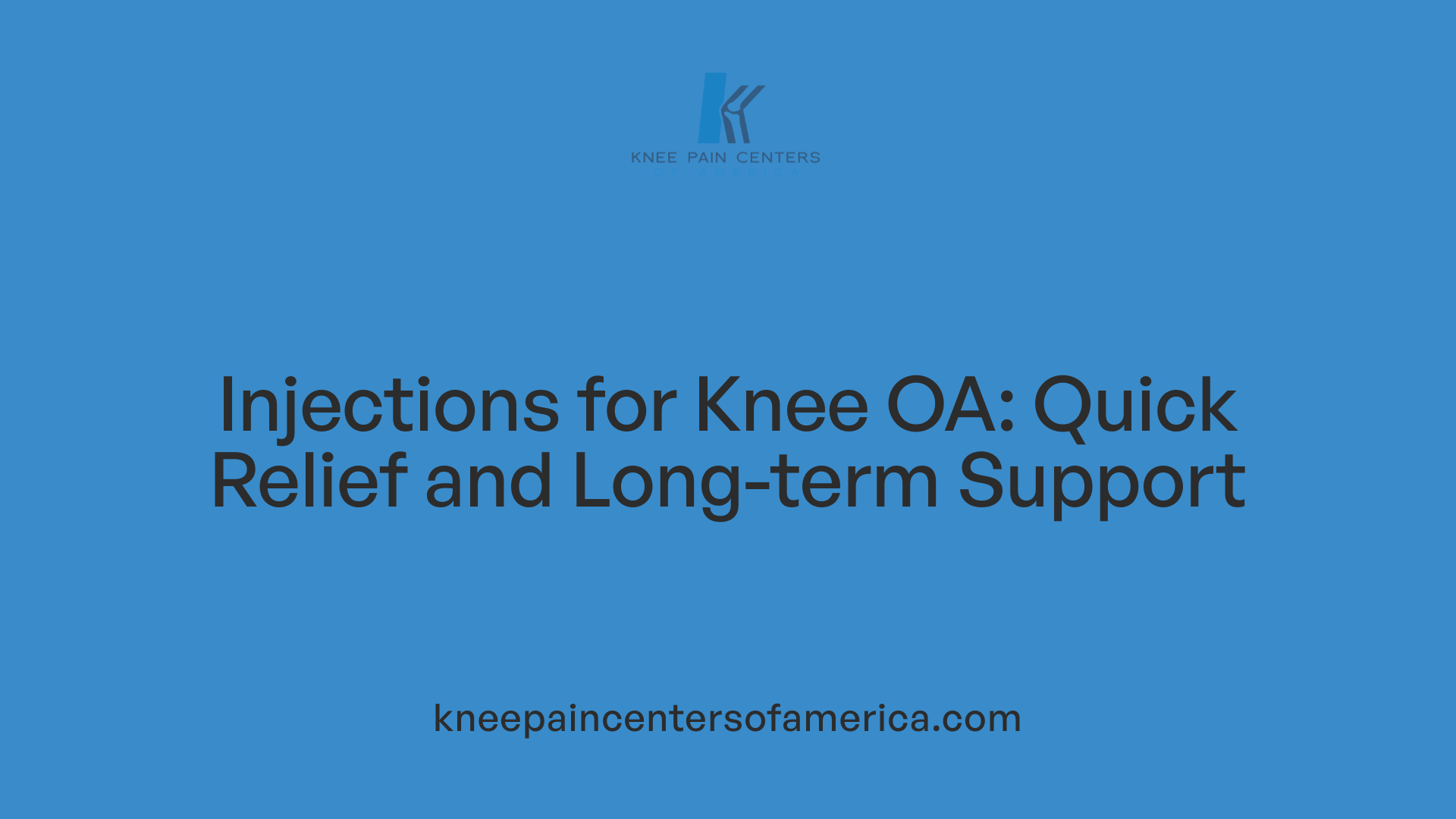
How do corticosteroid and hyaluronic acid injections help in treating knee osteoarthritis?
Corticosteroid injections work by rapidly reducing inflammation within the knee joint. They decrease swelling and pain caused by the inflammatory process of osteoarthritis, offering short-term relief for patients suffering from knee discomfort. This quick anti-inflammatory effect can help improve joint function and enable a return to daily activities.
Hyaluronic acid (HA) injections serve a different but complementary role. HA replenishes the natural lubricating fluid within the joint, reducing friction between the cartilage surfaces. This helps cushion the joint and can lead to improved mobility and longer-lasting pain relief. Unlike corticosteroids, hyaluronic acid may also inhibit degradative enzymes that break down cartilage and may support cartilage regeneration.
Benefits and limitations
- Corticosteroids offer fast symptom relief but can have limitations such as potential cartilage damage with frequent use and shorter duration of efficacy.
- Hyaluronic acid tends to have a more gradual onset but provides longer-lasting symptom control and fewer adverse effects.
Combining both therapies may enhance symptom control in some patients, though the choice depends on individual factors such as the severity of osteoarthritis and prior treatment response.
Safety considerations and clinical use
Safety profiles differ between the two treatments. Corticosteroid injections carry risks with repeated use, including cartilage thinning and joint damage. Hyaluronic acid injections generally have fewer serious side effects but may cause mild joint swelling or discomfort after injection.
Clinicians typically reserve corticosteroid injections for flare-ups requiring quick relief, while hyaluronic acid injections may be favored for sustained symptom management. Overall, these injections form part of a broader treatment strategy including physical therapy, weight loss, and medication.
| Treatment |
Mechanism of Action |
Benefits |
Limitations/Risks |
| Corticosteroids |
Rapid anti-inflammatory effect |
Quick pain relief |
Possible cartilage damage with repeated use |
| Hyaluronic Acid |
Restores joint lubrication and cushioning |
Longer-lasting relief, cartilage support |
Mild injection site reactions |
Cartilage Repair and Regenerative Surgical Techniques

What surgical options exist for cartilage repair in the knee?
Several surgical techniques aim to repair or regenerate damaged knee cartilage. Marrow stimulation methods, such as microfracture, abrasion chondroplasty, and subchondral drilling, promote the growth of fibrocartilage by activating stem cells in the bone marrow. These techniques are often used for smaller defects.
More advanced procedures include osteochondral autograft transplantation (OAT) and osteochondral allograft transplantation. OAT uses healthy cartilage and bone plugs harvested from the patient's own joint, whereas allograft transplantation uses donor tissue to fill larger cartilage lesions. Both strive to restore the smooth, durable hyaline cartilage surface.
Cell-based therapies like autologous chondrocyte implantation (ACI) and matrix-induced autologous chondrocyte implantation (M-ACI) involve culturing a patient’s cartilage cells and implanting them into the damaged area. These approaches are especially suited for larger defects and aim to regenerate durable, hyaline-like cartilage.
Patient selection criteria
Successful cartilage repair depends on a thorough patient evaluation. Factors influencing candidacy include the size and location of the cartilage lesion, the patient's age, activity level, limb alignment, and presence of other joint conditions like osteoarthritis. Younger, active individuals with well-defined cartilage defects typically have better outcomes.
Outcomes and rehabilitation
Post-surgical rehabilitation is critical to optimize repair durability and joint function. Recovery times vary by procedure but often involve protected weight-bearing, gradually increasing activity, and targeted physical therapy exercises to strengthen surrounding muscles.
While marrow stimulation techniques are less invasive and suitable for small lesions, the repair tissue may be less durable than that produced by grafting or cell-based therapies. Osteochondral grafting and ACI offer more lasting repairs but require meticulous surgical technique and longer rehab protocols.
Ongoing research continues to improve these methods, including newer biologic treatments and less invasive delivery techniques, aiming to enhance cartilage regeneration and patient outcomes.
Preventing Cartilage Damage and Maintaining Knee Health

What Are the Risk Factors for Cartilage Damage?
Several factors increase the likelihood of damaging the cartilage in the knee. Excess body weight puts additional stress on joint surfaces, accelerating wear.
Repetitive high-impact activities or improper sports techniques can strain the knee cartilage.
Previous knee injuries also predispose the joint to cartilage deterioration.
Other risk elements include aging and gender, with postmenopausal women more susceptible.
What Preventative Strategies and Lifestyles Support Knee Health?
Maintaining a healthy weight is critical to reducing joint pressure and slowing cartilage degeneration.
Engaging in strengthening exercises focusing on the quadriceps, hamstrings, lower legs, and core muscles helps stabilize the knee and distribute forces more evenly.
A proper warm-up and stretching routine before physical activity prevents undue cartilage stress.
Avoiding prolonged squatting or kneeling and managing repetitive knee stress protects cartilage integrity.
Healthy habits such as regular low-impact exercise and avoiding tobacco support overall joint health.
Why Is Early Intervention Important?
Early signs of cartilage problems include knee stiffness, clicking, mild discomfort, or grinding sensations.
Prompt recognition and management of these symptoms can prevent progression to osteoarthritis.
Early intervention may include activity modifications, physical therapy, and targeted exercises to preserve cartilage.
By addressing issues swiftly, individuals can maintain better joint function and avoid more invasive treatments later.
| Aspect |
Details |
Benefit to Knee Health |
| Risk Factors |
Excess weight, injury, repetitive stress |
Identification allows targeted prevention |
| Strengthening Exercises |
Quadriceps, hamstrings, core |
Enhances joint stability and reduces cartilage load |
| Lifestyle Adjustments |
Weight management, warm-up, avoid prolonged kneeling/squatting |
Decreases cartilage wear and stress |
| Early Signs |
Stiffness, clicking, mild pain |
Early detection enables timely intervention |
Taking a proactive approach combining lifestyle choices and early symptom recognition is essential for preventing cartilage damage and maintaining long-term knee health.
Summing Up the Vital Role of Cartilage in Knee Health and Treatment
Cartilage is essential for smooth knee joint function, acting as shock absorber and friction reducer. Osteoarthritis and cartilage damage disrupt this role, leading to pain, stiffness, and disability. While cartilage has limited natural repair ability, a variety of non-surgical and surgical interventions offer effective symptom management and joint preservation. Physical therapy, medications, injections, and lifestyle changes play critical roles in early and moderate disease, while surgical procedures including cartilage repair and knee replacement provide solutions when damage is severe. Understanding cartilage’s role informs tailored treatment strategies to maintain mobility and quality of life for those affected by knee osteoarthritis.
References